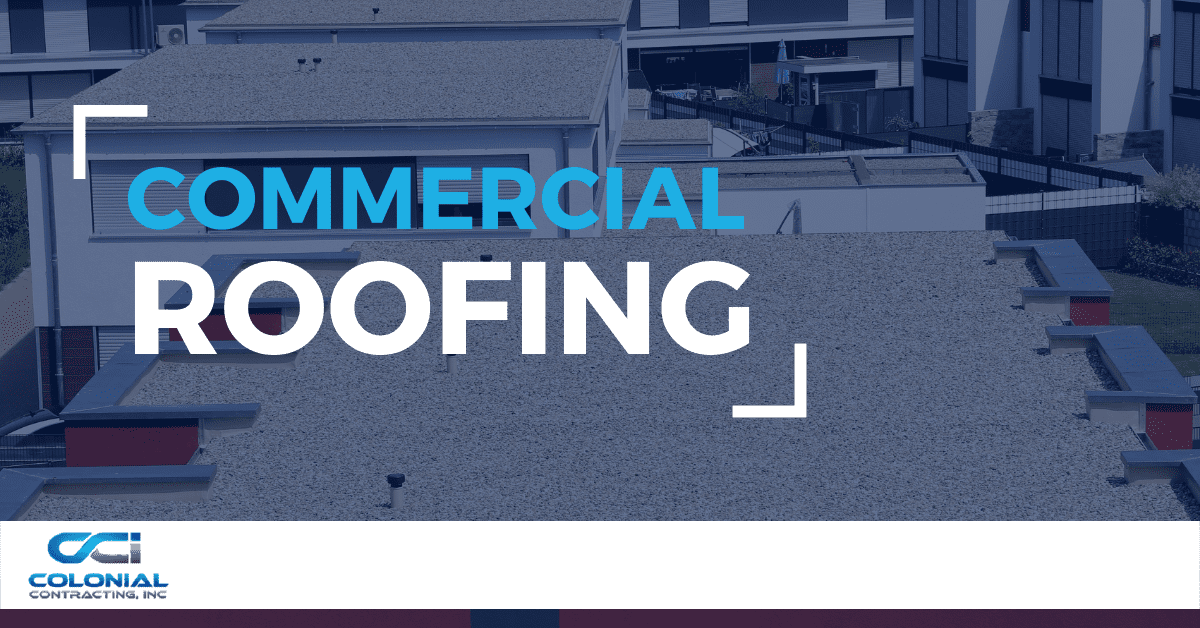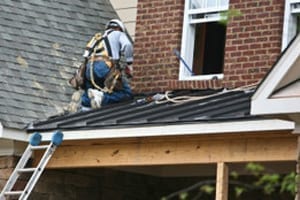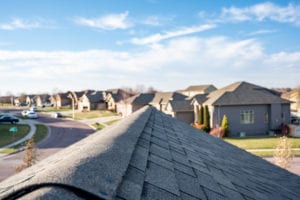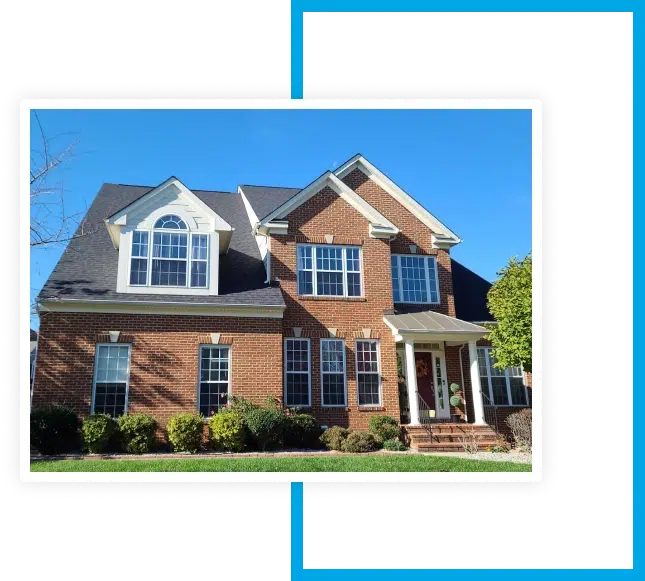What Does Hail Damage Look Like on a Roof?
If you live in an area where hail and wind storms happen, you may be curious how hail damage affects your roof and what does hail damage look like on a roof. Your roof is your home’s primary protection from the elements, including those fierce storms. If you’re in the pathway of hail, it’s natural to wonder what to do next. What amount of hail damage did your roof sustain, if any? Should you call your home insurance company and request a new roof?
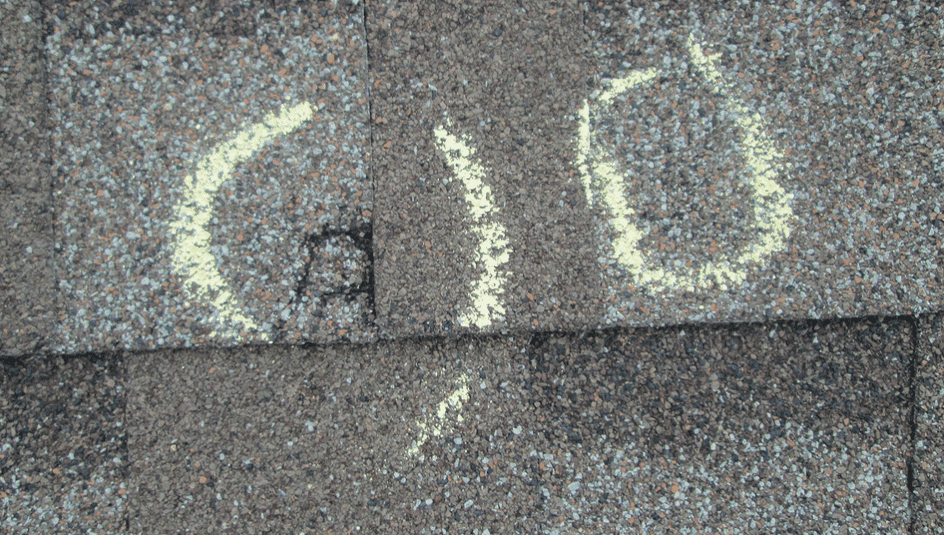
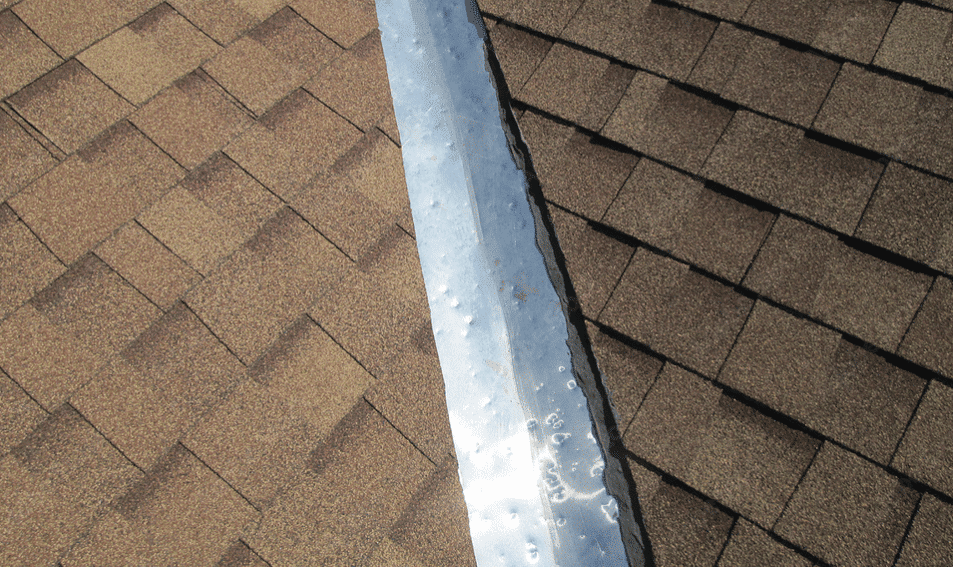
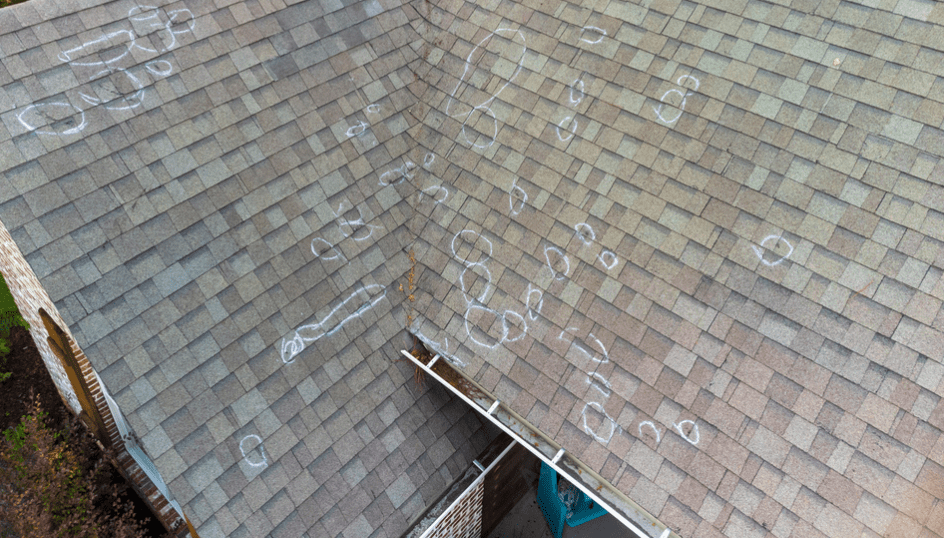
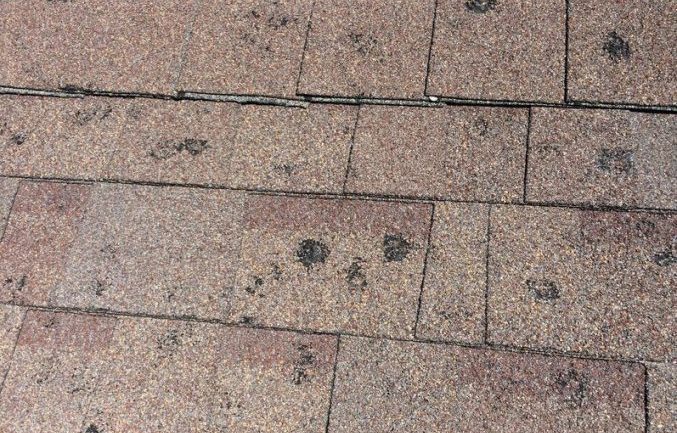
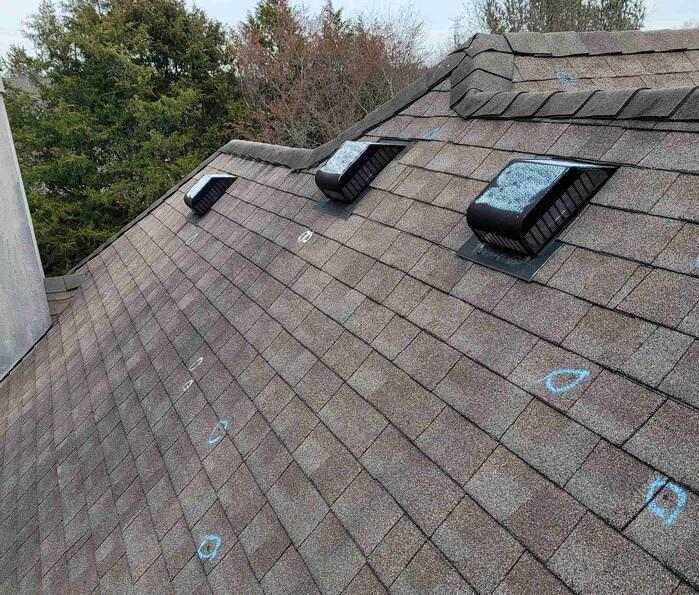
The good news is that not all hail storms cause significant damage to your roofing materials. Let’s start with the basics of hail and how to tell if you’ve sustained roof damage to your shingles and other areas.
What are the signs of hail damage?
Depending on the hail size, hail hits can leave behind some signs of property damage, although roof damage can be difficult to determine by homeowners. Below is a short list of things to look for that may indicate your home and building materials have sustained hail damage:
- Shingles hail damage. How do you know if the storm has damaged your shingles? Look for asphalt shingles that are cracked, torn, or missing. If you see pieces of asphalt shingles in your front yard, you know that you may have a problem. Depending on the wind direction of the hailstorm, you may also notice shingles that have started to curl at the edges. Any of these signs can indicate damage from the hailstones and windstorms.
- Missing surface granules. Asphalt shingles have granules on them that offer a layer of protection, and granule loss is a sign that the hailstones may have caused damage. Bare spots and different color patches on a shingle can help you identify granule loss. You may also notice granules on the ground around your home or clogging up your gutters. In the midst of a hailstorm, the granules can be blown in every direction, so look up AND down when trying to assess damage to your shingles.
- Other material damage. Asphalt shingle damage is relevant if you have an asphalt shingle roof! But you may also see similar damage if you have wood shingles or a metal roof. Rather than looking for missing granules, you can look for dislodged wood shingles or dents in your metal roof. Gutters and downspouts, siding, roof vents, and windows can all show signs of hailstone damage. And chances are, if you can spot damage to these more easily accessible materials, your roof was also affected. It’s unlikely that hail impacts would hit only your gutters and miss the roof entirely, so if you notice damage to your property, assume there is damage to your roof.
- Leaks and obvious signs of damage. Anytime a homeowner notices water leaks, there is a problem. Whether you have an asphalt shingle roof, metal, or tile roof, water leaks must be stopped as soon as possible. Not only will they continue to cause harm to your roof, but they’ll also start to cause damage to your belongings. Once water gets into your home or business, it’s hard to get it out quickly. Look for obvious signs of a leak, like water dripping from the ceiling, and less obvious signs, like staining or discoloration around ceiling corners and edges.
We always recommend homeowners document any type of damage they notice. From shingle hail damage to gutters to leaks, take notes and pictures as soon as possible. You can share the notes you have with your roofing contractor during a roof inspection, as well as your insurance company, if you choose to file a claim for the damage.
How can you tell if your roof has hail damage?
After a hail storm, you will likely notice if your car or siding has hail damage because you can easily see the tell-tale dimples from the ground. But a roof may not show obvious signs of hail damage. We don’t recommend climbing up on your roof to inspect it after the hail storms are over. The damage can create unsafe conditions and become dangerous to anyone on the roof. Call a professional contractor to complete an inspection and stay safely on the ground.
What size hail does it take to damage a roof?
Different size hail can cause different types of roof problems. Let’s break it down to a general guideline for hail storms and the potential damage to your shingles, roof, and other areas.


1 Inch – hail this size is roughly the size of a quarter. And with no mitigating factors (like an old roof or asphalt shingles that are already damaged), it’s unlikely that this size of hail will cause much damage to your shingle roof. It will more than likely hurt things like plants in the front yard.
1.25 Inch – hail this size is roughly the size of a half-dollar. And like one-inch hail, it won’t typically cause major damage to shingles or other roofing types. But it can cause some minor problems, and depending on the storm and your roof, you’ll need to assess things like your asphalt shingles, your home’s siding, etc.
1.5 Inch – hail this size can start to do some real damage. At one and a half inches, this hail is about the size of a walnut, and it can impact shingle roofing materials, siding, wood, and more. At this point, the hail and accompanying wind speed of the storm will likely have caused damage to your roof shingles and building materials.
1.75 Inch – hail this size will remind you of a golf ball. And if you think about what a professional golfer might do to your home if he or she hit high-speed balls at your house, you’ll know this type of hailstorm can cause significant damage. From metal roofing to roof shingles, it’s unlikely that any roofing materials will survive unscathed.
2 Inches or more – hail this size does the worst damage and can be extremely dangerous. Think of hailstones the size of tennis balls falling from the sky. If you’re in a storm with hail this large, your property will very likely sustain damage – from roof shingles to vinyl siding to cars. Expect to file insurance claims for your home and other assets after a hail storm like this.
5 Questions About Hail Roof Damage
Do I need to replace the roof after hail?
Should you replace a roof after hail damage? The answer is possibly. As we explained above, hail and weather damage can mean a lot of different things. Small hail may simply disturb your outdoor plants. Large hail can cause damage to gutters and downspouts, aluminum siding, an asphalt shingle roof, wood shingles, a metal roof, and more. The damage can be severe to property owners.
In addition to the size of the hailstones, the age and condition of your roof is also a factor. A roof that is ten years old and has been subjected to years of UV rays and weather conditions will not hold up as well as a newer roof made from class 4 certified materials. Class 4 materials are designed to withstand the hail impact of a larger hailstone better.
The best way to determine if you need a full roof replacement is to request a roof inspection from a professional roofing contractor. Most reputable roofing companies offer a free, no-obligation inspection for homeowners. That means you can get a quality assessment of your roof from a professional roofing contractor. You’ll get an overview of your roof’s condition, a list of any damage, and, if necessary, a quote for the repair or roof replacement.
Should I file an insurance claim for hail damage?
If any part of your home or business has sustained hail damage, from gutters to roof to siding, you will probably want to file an insurance claim. Most often, the only reason homeowners don’t file a claim for hail damage is if the repair is less than the insurance deductible. That simply means that if you have to pay a deductible that is more (or equivalent) to the repair cost, you likely wouldn’t involve your insurance company.
If the roof hail damage is serious, you should contact your insurance company. Most companies in the United States cover an “act of God,” such as a serious hail event. And you’ll want the assistance of your insurance agent to help pay for the repairs.
At CCI, we work with insurance claims and the home owner to ensure a smooth process for restoring the property. When we provide a free inspection, we use an approach that aligns with most insurance companies, and we work with your insurance adjuster throughout the project.
How do I find a professional roofing company?
If you’re trying to recover from hail damage and roof damage, the last thing you need is an inexperienced roofing contractor that will cause more problems down the road. We recommend starting with a search online for reputable, trustworthy roofing professionals in your area. You can view each company’s site and confirm they are a local business with experience in shingles, hail damage, and more.
For any business, be sure to read customer reviews and complaints. What past customers are saying can tell you a lot about the roofer’s reputation in their community. You can also visit third-party references such as the Better Business Bureau.
Take the time to verify any professional licenses before you begin a project. These licenses vary by state but are an important way to know that you’ve retained a professional and not someone taking advantage of a bad situation.
Never sign up with a roofer that is going door to door after hailstorms. Some roofing companies swarm into an area after weather events and hail damage and try to get homeowners to agree to a quote using high-pressure sales and tactics. In some cases, these roofing companies will ask you to sign over your insurance benefits. It’s imperative to avoid these shady tactics at all costs. You want a professional roofing company that’s worked in your area and has an established reputation, not one that will disappear after the work is done (or after they’ve taken your money).
What happens if I file a claim for storm damage?
To start a hail damage claim with your insurance company, you need to contact them and let them know that your home has been in a hailstorm. Most likely, you can do this by phone or email, depending on your policy requirements. Once they open your claim, the insurance company will send someone to your home or business. They’ll review the site and hail damage and confirm if your policy will cover the claim.
From there, you’ll usually be able to begin the repair or roof replacement with a licensed roofing contractor of your choice. If you’ve already completed a free roof inspection and received a quote in line with your policy payout, you may wish to use that contractor.
In some cases, insurance companies will require that homeowners use a contractor of their choice to repair the hail damage. If your policy states this, be sure to request information on the roofing business and take the time to ensure they are reputable in your area.
Once your insurance adjuster and roofing contractor have started the project, you’ll be able to begin recovering from the damage. A professional roofing contractor will keep you informed while they are on site at your home or business and be able to answer any questions about the roof hail damage.
If your home or business sustained damage from the hail stones to more than the roof, you might want to inquire if your roofing contractor is qualified to make all the home repairs.
At CCI, we’re fully licensed contractors who can repair property and roof damage. We know that hailstorms can cause all types of problems, from windows and siding to doors and shingle, metal, and tile roofs. Our goal is to get your home or business back in working order in the least amount of time with a quality repair.
What happens if you don’t replace a hail-damaged roof?
In some cases, hail damage can easily be repaired with a few new shingles. In other cases, hail damage can be severe and require a new roof. Either way, roof damage that is not repaired can cause significant issues down the road. From leaks and mold to structural concerns, the impact of putting a project off can be high.
After the inspection and claim filing, repair roof hail damage as soon as possible. Don’t wait for a minor problem to get worse. Or for hail damage that your insurance would have covered to go too long and extend past coverage limits.
The best time to repair hail damage and roof damage is when it occurs. It’s not fun, but the impact is much less severe when caught early and repaired correctly.
CCI is your local roofing contractor.
Our team has been a local, trusted contractor since 1997, and we’ve seen the impact of hail damage to homeowners in our area. We are experienced in working on any type of roof, from asphalt shingles to tile, metal, wood, and more.
Call us or click here to schedule your free, no-cost, no-obligation inspection. We’re happy to assess your shingle and roof hail damage and provide a comprehensive review of the type of repair you need. If you file a claim with your insurance, we’ll work with your adjuster through every step.
Our goal is to restore your home or business and repair your hail damage quickly and correctly. Learn more about us and how we have helped customers in our area recover from every type of roof damage.
Trusted by Industry Experts









